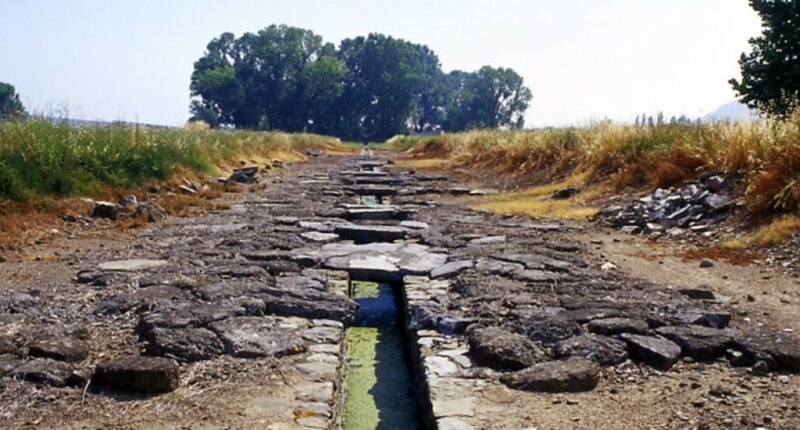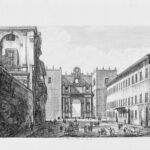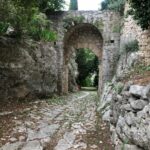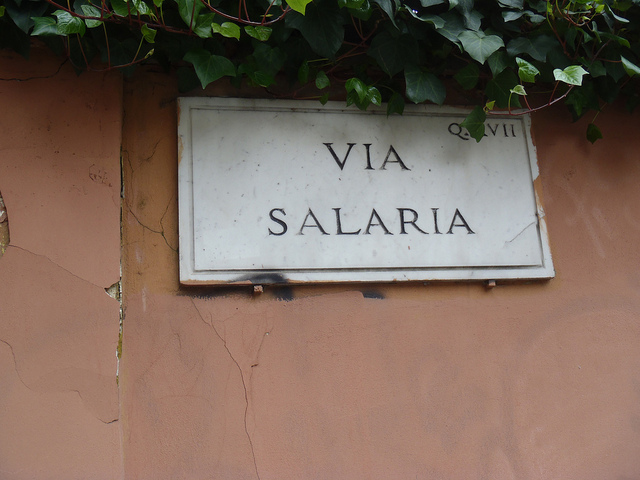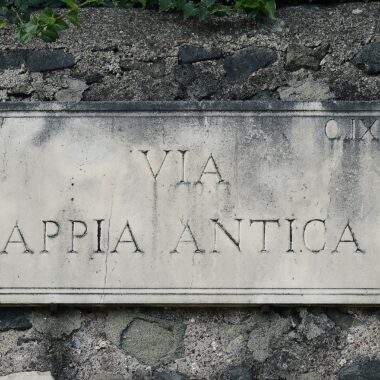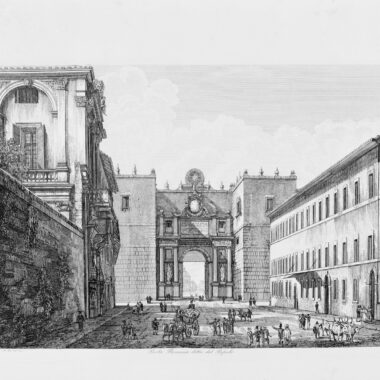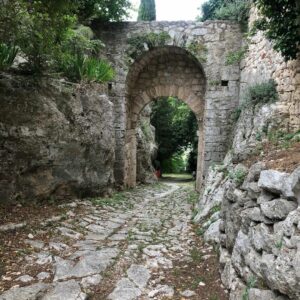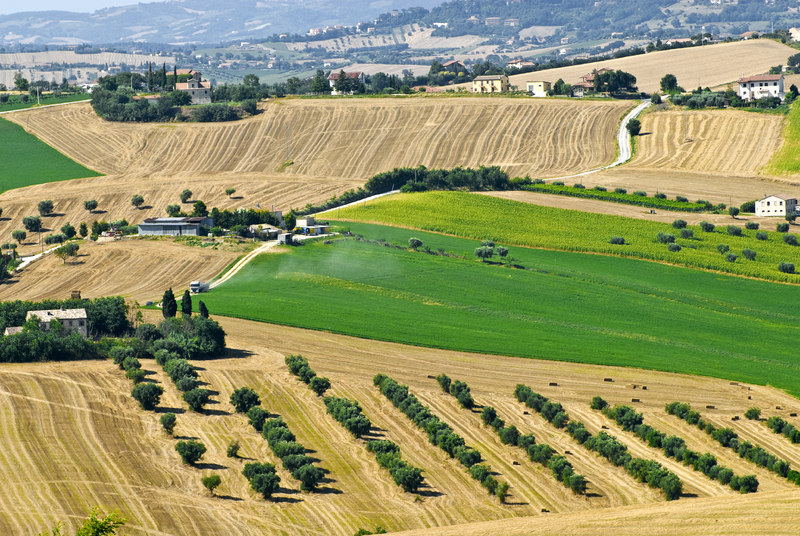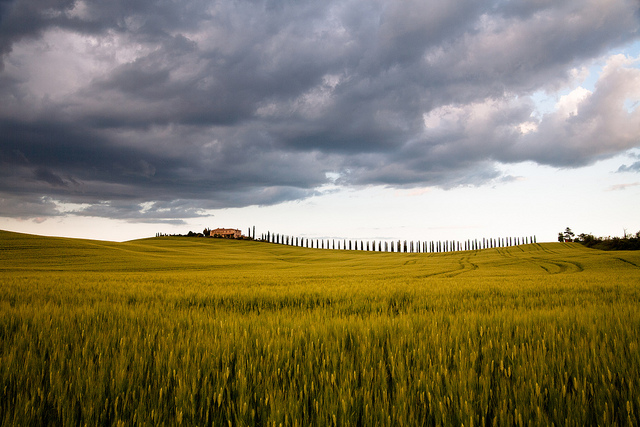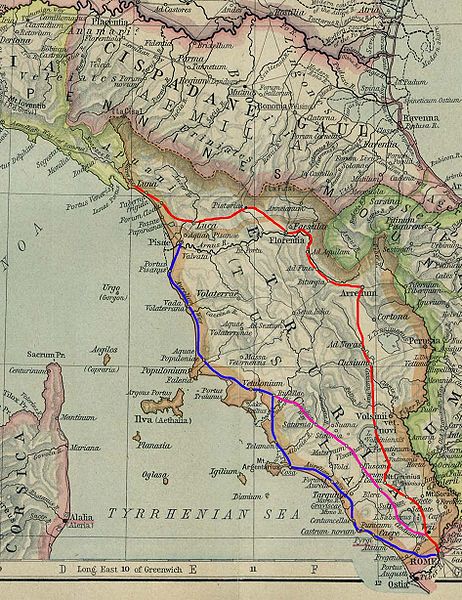Via Aurelia is one of the most notable Roman roads, with an estimated length of over 1000 kilometers, 700 of which are in modern-day Italy. It connects Rome to the Tyrrhenian Sea, then follows the Tuscan coast up to the city of Genoa, where it ends. It is a very fast way to connect the Italian capital to the Côte d’Azur and the south of France, as well as connecting major Italian ports to one another and to Rome.
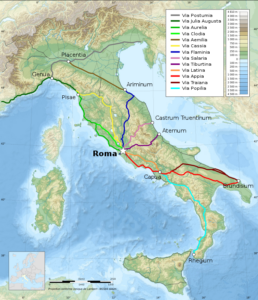
The Via Aurelia’s Historical Background
There is some uncertainty concerning the roots of this historical event. To be generic, we can state that the road dates back to 241 B.C., according to a reconstruction of events.
According to other sources, it appears to be more modern and goes back to 200 BC, thanks to the work of consul Gaius Aurelius Cotta, who intended to connect Rome to the newly conquered Etruria while other portions mainly remained inaccessible. Despite these ambiguities, the significance of the past and present is undeniable. With the conquests to the north, the Romans needed to expand their road network to allow military and economic movements.
The map below depicts the important stations of central Italy at the time the Via Aurelia was completed.
The part of Via Aurelia that passes Rome is still known as via Aurelia Antica or simply via Aurelia Vetus. It left the Forum Boario and arrived in Pisa first.
The route was extended over the years, reaching under the reign of Augustus, the first Roman emperor, to connect isolated districts of the empire to Ventimiglia.
The road’s name changes to Via Julia Augusta after reaching the French-Italian border. It connects to additional smaller routes from here, assuming the shape of a dense network if viewed from above. In various places around France, there exist several stations that provide evidence of the real passage of the Roman road.
Roccabruna Capo-Martino, Nice, La Gaude, Antibes, and Frejùs, for example, are among the most popular stations to date. The Via Aurelia runs into the Via Domitia and ultimately into Spain, connecting the entire western continent to the old and beautiful Rome.
An important commercial and military traffic node
The Via Aurelia helped create a strong synergy between the army and navy, and it truly was the backbone by which defensive forces moved along the coastline. Today, the road is not much different from then, as it kept mostly unchanged; it still links the Eternal City, Rome, to the North West of the country and France.
Roads like the Via Aurelia were critical, as they connected cities and strategic areas, enabling the movement of goods and people quickly and efficiently. The Roman Empire was truly founded on its road system, which was efficient, extremely well-designed, and perfectly built. The colonies needed to be reached quickly, and communication between them and Rome had to be as fast as possible. As trade and immigration increased, the Empire needed a perfect road system, which eventually became the bone structure of modern Italy’s road structure.
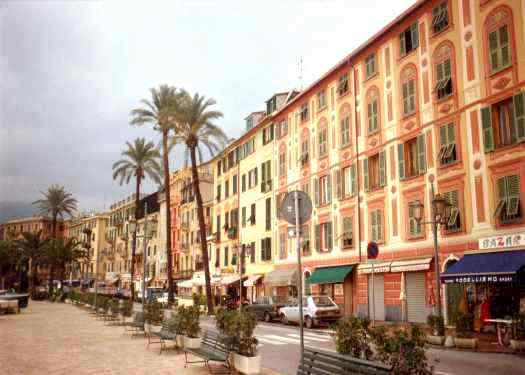
All the roads lead to Rome
It is interesting to point out how all roads built in Roman times, including the Aurelia, shared the same width of 15 feet and how their famous milestones, placed on the roadside to mark miles and distances to Rome, can still be seen across the country. The term “pietra miliare” (Italian for “milestone”, that is) is a term still widely used today to identify a mark, a step to be reached, or a significant moment in someone’s life or professional career. In Roman times, roads were devised and built following a specific plan: all ended and began in the Urbs Aeterna, Rome: this is, indeed, where the expression “all the roads lead to Rome” comes from.
Today, the Aurelia is still a very important road, used every day by thousands of people, providing a scenic drive through some of the most picturesque areas the Italian coastline has to offer. However, traffic can at times become rather congested so, if you need to travel quickly or your destination is a particularly large city served by the Aurelia, you may be better off choosing the freeway (the Autostrada A 12).
Edited by Francesca Bezzone & Francesco Paladini
